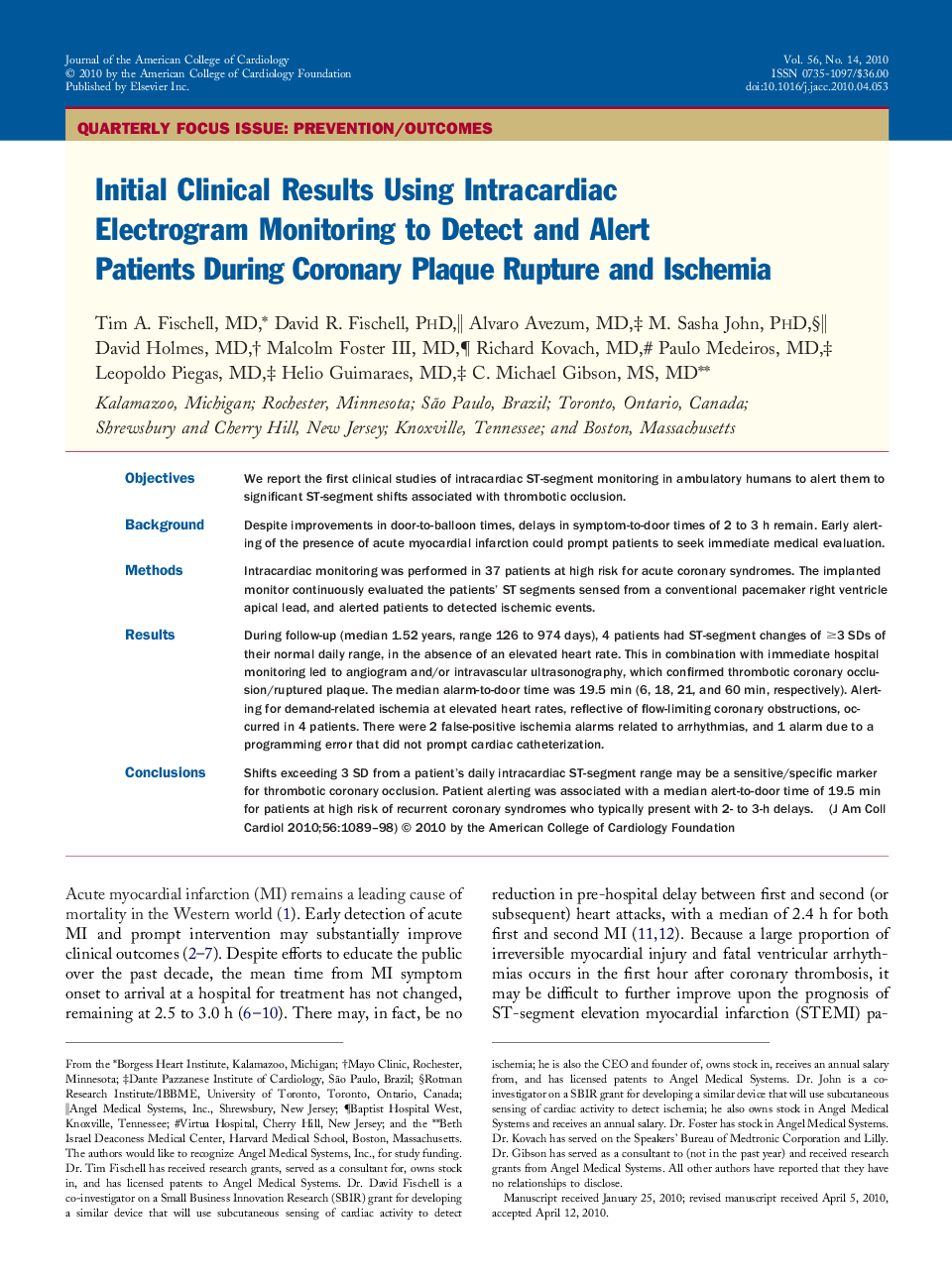| Article ID | Journal | Published Year | Pages | File Type |
|---|---|---|---|---|
| 2948988 | Journal of the American College of Cardiology | 2010 | 10 Pages |
ObjectivesWe report the first clinical studies of intracardiac ST-segment monitoring in ambulatory humans to alert them to significant ST-segment shifts associated with thrombotic occlusion.BackgroundDespite improvements in door-to-balloon times, delays in symptom-to-door times of 2 to 3 h remain. Early alerting of the presence of acute myocardial infarction could prompt patients to seek immediate medical evaluation.MethodsIntracardiac monitoring was performed in 37 patients at high risk for acute coronary syndromes. The implanted monitor continuously evaluated the patients' ST segments sensed from a conventional pacemaker right ventricle apical lead, and alerted patients to detected ischemic events.ResultsDuring follow-up (median 1.52 years, range 126 to 974 days), 4 patients had ST-segment changes of ≥3 SDs of their normal daily range, in the absence of an elevated heart rate. This in combination with immediate hospital monitoring led to angiogram and/or intravascular ultrasonography, which confirmed thrombotic coronary occlusion/ruptured plaque. The median alarm-to-door time was 19.5 min (6, 18, 21, and 60 min, respectively). Alerting for demand-related ischemia at elevated heart rates, reflective of flow-limiting coronary obstructions, occurred in 4 patients. There were 2 false-positive ischemia alarms related to arrhythmias, and 1 alarm due to a programming error that did not prompt cardiac catheterization.ConclusionsShifts exceeding 3 SD from a patient's daily intracardiac ST-segment range may be a sensitive/specific marker for thrombotic coronary occlusion. Patient alerting was associated with a median alert-to-door time of 19.5 min for patients at high risk of recurrent coronary syndromes who typically present with 2- to 3-h delays.
